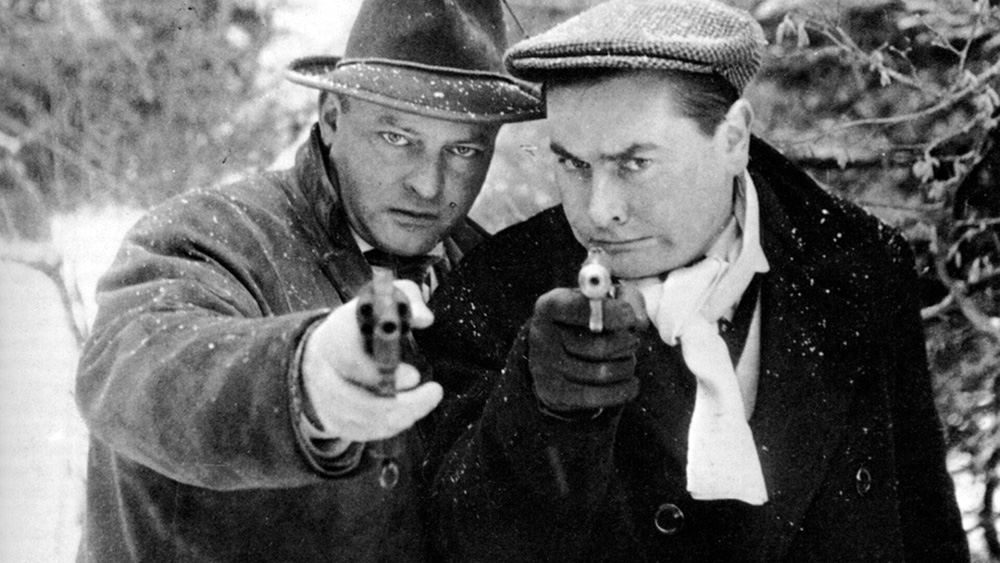At only 28, Francois Truffaut was already carrying the burden of a French New Wave-defining feature on his back. The 400 Blows (1959), his first film, had been an unexpected, oversized success; as it sometimes happens with such critical receptions, the film ballooned up and out of the director’s control. Truffaut saw the film mutate into something “academic,” seeming to land best with the audiences that—in Truffaut’s own words—go to the cinema twice per year for “René Clair and The Bridge on the River Kwai.” In other words, the life and times of young Antoine Doinel had fallen into the clutches of the original film bro, the audience Truffaut dreaded most of all, his own pretentious leanings be damned.
If The 400 Blows’s reception felt like the beginnings of a pigeonhole for the type of filmmaker he could be, Truffaut had some points to prove about the kind of director he was not in his second feature. He was not a one-note flute, for instance; he had plenty of script treatments lying around for movies about children, but knew he had to shelf them for a little while. He also refused the characterization of the French fetishist, adapting French novels and plays about French experiences in French cities (smoking French cigarettes all the while); instead, he tried on the hat of the American filmmaker of B-movies and noirs, of which Truffaut had seen 1,500 of and owed much of his creative inspiration to. But even in his attempt at Americana, Truffaut refused to be a cut-and-dry imitator of the classic Hollywood picture. His film turned out to be a romance in a gangster movie’s clothes, a thriller without thrills, a comedy that turned around and broke your heart without you ever quite knowing when or how.
Such is the special blend of energies that bred Shoot the Piano Player (1960); not Truffaut’s best or even second-best film, but despite itself, a beautiful and strange object in its own right. In a city intended to be an unidentifiable blend, somewhere between Paris and Los Angeles—but is unmistakably Paris, naturally—the local bar piano man Charlie Kohler (Charles Aznavour), also known as the renowned concert pianist Édouard Saroyan, trades Bach for honky-tonk, playing pitch-perfect on a toy piano night after night and leaving his young son, Fido (Richard Kanayan, one of Truffaut’s boys from The 400 Blows), in the care of the stunning prostitute down the hall while he works nights. Kohler suffers from acute shyness. He is quietly in love with Lena, the bar’s waitress (Marie Dubois), but can’t seem to figure out the right way to take her by the arm. Then his older brother barrels into the bar one night with a black eye, running from gangsters whom he’s just stolen from and begging Charlie to get involved. All at once, Charlie and Lena are interpellated into something like a gangster war, with the two rival gangsters stalking the two and attempting to get them to reveal where the two criminal Saroyan brothers are holed up. Along the way, through long drives and meandering dialogues, we end at a shoot-out.
The drives alone might be the best reason to revisit Shoot the Piano Player. Driving along Paris’s new highways, winding roads framed by darkness and a shaking camera—a night scene punctuated by streetlights and, sometimes, the beams of other cars heading in the opposite direction. It’s a familiar sight, somehow. Shot from the backseat looking forward, such scenes might remind you of a long ride home in winter; at one moment, you’re a child falling asleep on someone else’s shoulder, and all of a sudden, you’re awakened, after what feels like years later, by the shock of sunlight on fresh, fallen snow.
Shoot the Piano Player is a film about images, after all. I think of Édouard looking down at Thérèse Saroyan (Nicole Berger), bloodless and bent at the bottom of a four-story fall. Or Charlie and Clarisse (Michèle Mercier), under bedcovers as an off-screen neon sign strobes. “I think I made [Shoot the Piano Player] because of one image,” said Truffaut. “At the end of the novel by [David] Goodis, there is a little house in the snow, fir trees, and a small sloping road, and you could say that the car was sliding on this road without one hearing the sound of the motor. I wanted to stage this image… I have the shot of it in the film. It is possible that I made the film for this shot—for this ambiance, for these love relationships.”
Shoot the Piano Player screens tonight, September 15, at BAM on 35mm as part of the series “I’m Not Myself Today: Films that Inspired A Different Man.”



